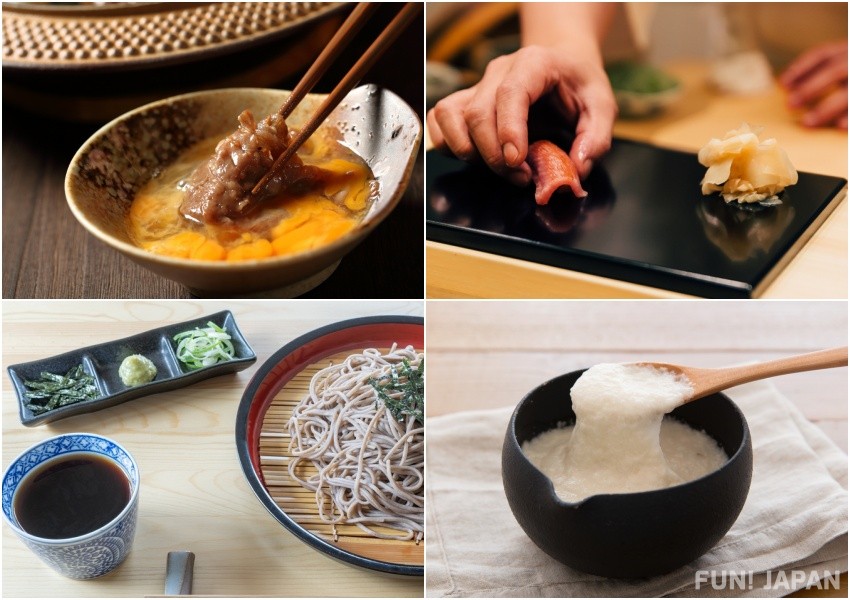
Sukiyaki, sushi, tempura... There are so many Japanese dishes you'd want to try when you come to Japan, aren't there? But, do you know when and how to eat the raw egg that comes with your sukiyaki? There are also many unique Japanese items such as gari, which is served with sushi, and pickles that come with a set meal. Although they are not the main dish and tend to be overlooked, knowing why they are served and their purpose can make your meal even more delicious! To ensure you don't get confused when dining in Japan, we will thoroughly introduce when and how to eat these items in this article!
Do you dip the ingredients of sukiyaki into the raw egg? Or do you mix it into the pot?
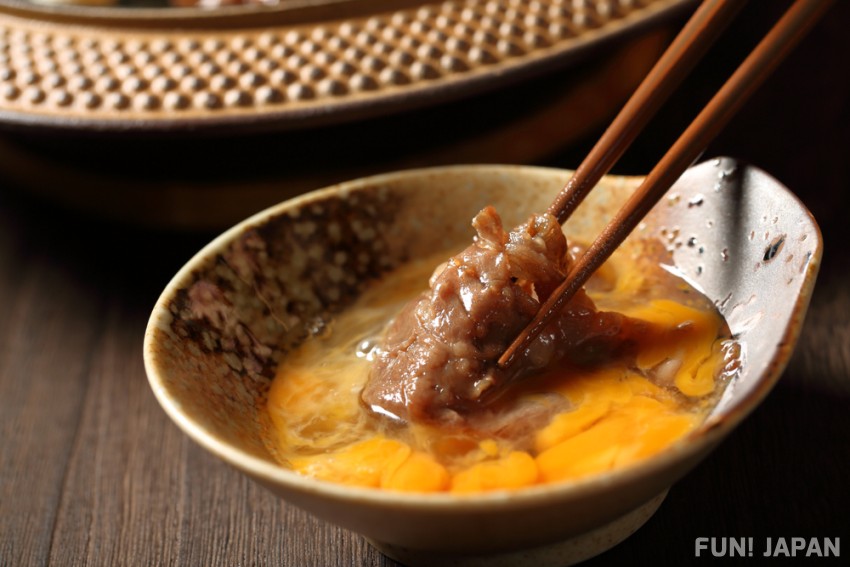
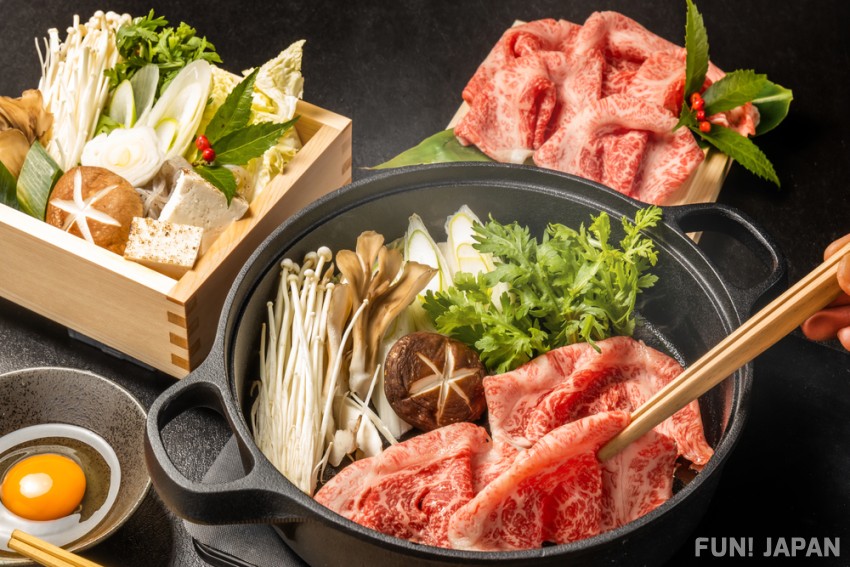
How to eat the raw egg that comes with Sukiyaki?
Once the Sukiyaki is ready, first crack a raw egg into a bowl and beat it. Dip the simmered Sukiyaki ingredients into the beaten egg before eating. The ingredients of Sukiyaki, such as beef, shiitake mushrooms, and tofu, are seasoned with a sweet soy sauce-based flavor, and the egg wraps the umami of the meat, making it a mellow taste.
Why dip Sukiyaki in raw egg?
There are said to be three reasons for eating with beaten egg.
- First, the ingredients simmered in the pot are very hot, so the purpose is to cool them by dipping them in egg.
- Second, sweet and salty beef and raw eggs are a perfect match, and by dipping them in raw eggs, the ingredients such as beef become mellow and gentle in taste.
- The third reason is to soften the smell of beef.
For those who don't like raw eggs! What ingredients other than raw eggs match Sukiyaki?
For people from countries or areas where there is no custom of eating raw eggs, it can be a high hurdle to eat raw eggs. Of course, even if you don't force yourself to dip it in raw eggs, you can still enjoy the original taste of Sukiyaki and it is delicious enough. Instead of raw eggs, you can substitute with grated radish, Shichimi (seven spice blend), or grated yam called 'tororo'. Grated radish refreshes the strong seasoning on the Sukiyaki ingredients. Also, it contains components that increase appetite and promote digestion, so if you eat it with grated radish, you can say that it is less likely to cause indigestion even if you eat too much meat.
About the Tororo that comes with the set lunch, do you eat it as is? How do you eat it deliciously?
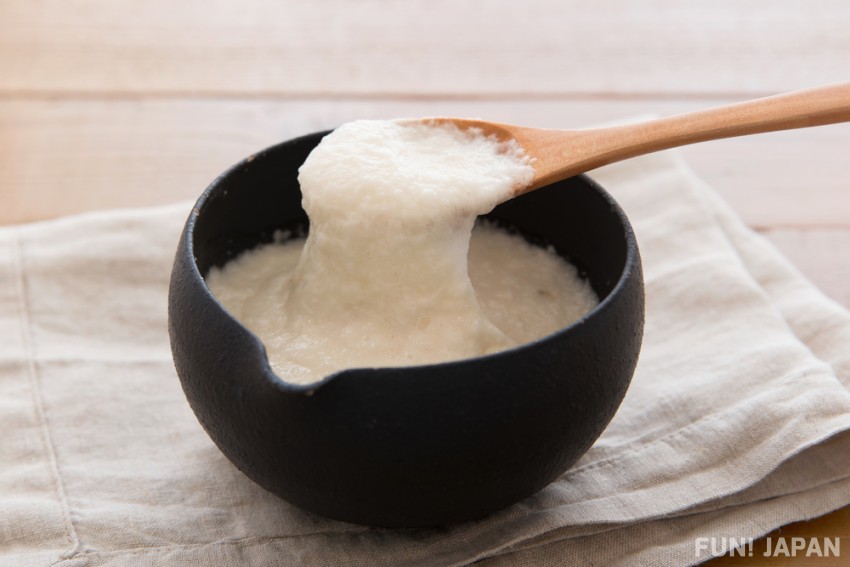
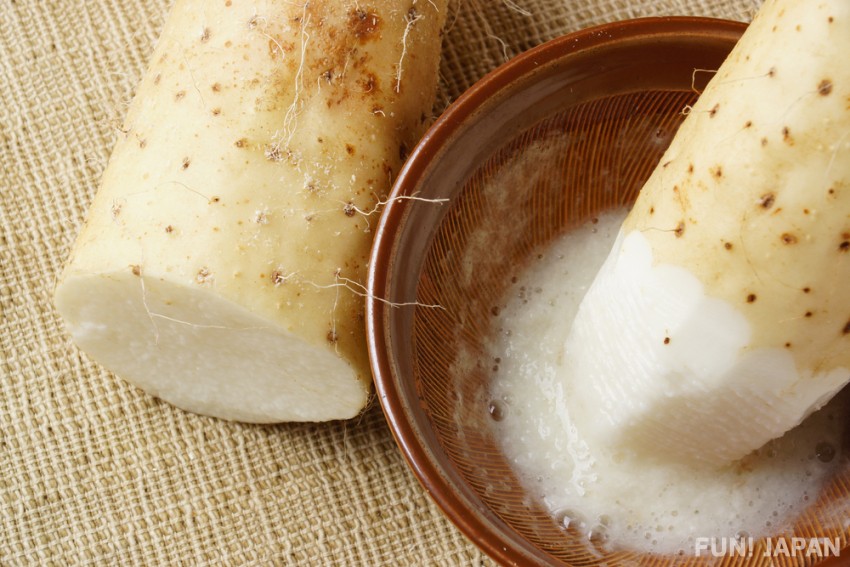
What is Tororo?
"Tororo" is a dish made by grating yams such as nagaimo and jinenjo. These yams are unique ingredients that undergo three transformations: they have a crunchy texture when eaten raw, become sticky when grated, and become fluffy when heated. Yams have been traditionally referred to as "mountain eels", and are believed to boost stamina and be good for nourishment and invigoration.
The characteristics of tororo vary depending on the type of yam used. Nagaimo has a smooth texture and high water content, while jinenjo has a stretchy stickiness. Furthermore, tororo is rich in dietary fiber, which is expected to aid digestion and absorption, and suppress sudden increases in blood sugar levels. It is also believed to be helpful in relieving swelling and constipation.
How to eat Tororo?
The way to eat it is simple. Pour tororo over rice, drizzle soy sauce, and sprinkle nori seaweed on top. Some restaurants may season the tororo itself with bonito and kelp broth and soy sauce.
There are various ways to enjoy grated yam, not only on white rice as grated yam rice, but also in dishes such as grated yam soba, grated yam soup, grilled grated yam, and grated yam hot pot. In Asakusa, Tokyo, there is a restaurant specializing in grated yam rice called "Asakusa Mugitoro Honten". Also, when you visit a beef tongue specialty restaurant in Sendai, it is common to have a set of beef tongue meal, barley rice, and grated yam rice.
Is the Nanban miso of the beef tongue meal for dipping the beef tongue or for accompanying the rice?
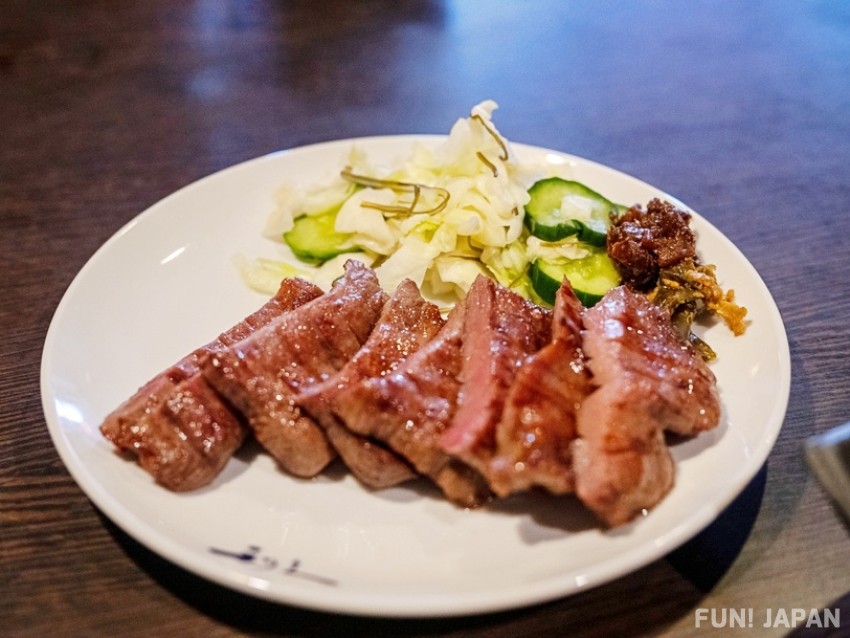
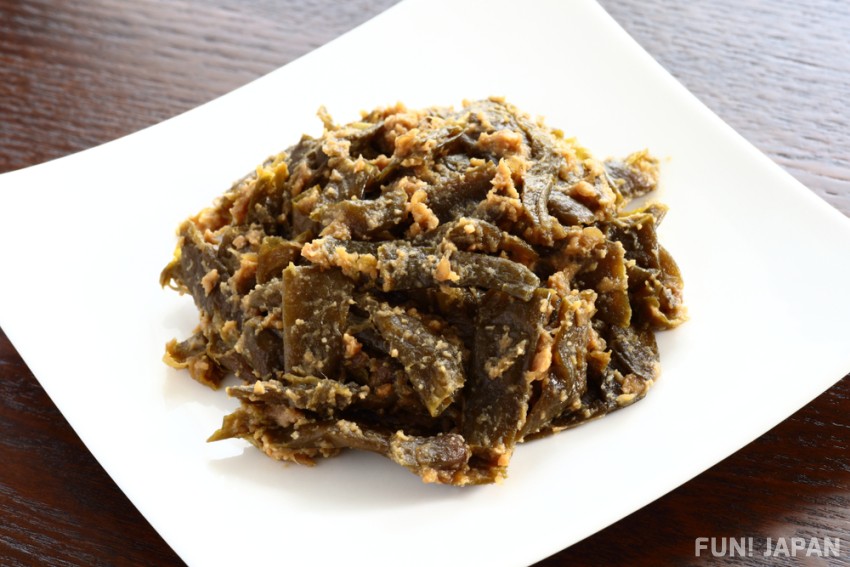
What is Nanban Miso?
"Nanban Miso" is a dish made by stir-frying and simmering green chili peppers with miso and other seasonings. The sweetness of the miso and the aroma of the chili peppers stimulate your appetite. In the Tohoku region of Japan, chili peppers are called "Nanban", hence the name "Nanban Miso". It is often served when eating Sendai's local gourmet "beef tongue", but many people also enjoy it as an accompaniment to rice, as an ingredient in rice balls, or as a tofu topping. The long-established pickle shop "Bankiku Honpo Mioku-ya" in Yamagata Prefecture, which has been in business since the Edo period, is said to be the originator of "Nanban Miso".
How to eat Nanban Miso?
When it comes with a set meal, you might be tempted to eat it "with beef tongue", but it is recommended to enjoy it "as a side dish with white rice". The richness of the beef tongue and the spicy kick of the Nanban Miso can be addictive. It also helps to refresh your mouth after the greasiness of the beef tongue and stimulate your appetite.
Nutritious! In addition to Nanban Miso, barley rice and grated yam are also included in the set
When you order a beef tongue set meal, it often comes with barley rice and grated yam, in addition to Nanban miso. The beef tongue specialty restaurant "Gyutan Tororo Mugimeshi Negishi" is said to have started this in the 1980s, offering the "Negishi Set", which combines healthy grated yam with barley rice and tail soup.
When and how do you eat pickles that come with rice?
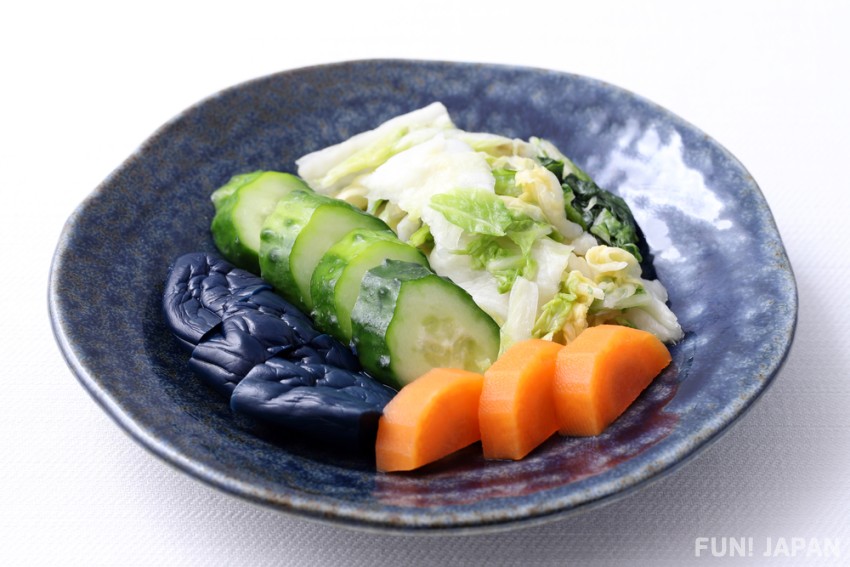
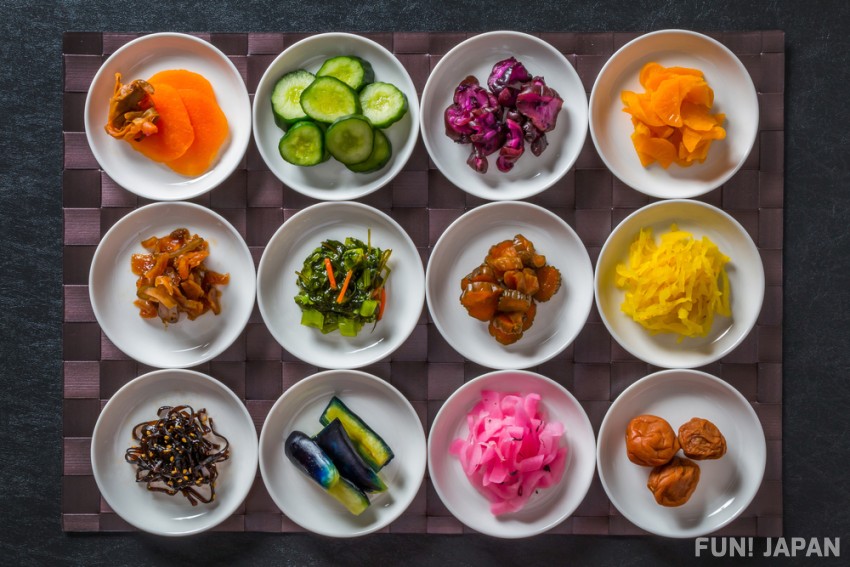
What are pickles?
Pickles refer to food items that have been enhanced in flavor and preservation by immersing ingredients such as radishes and cucumbers in salt, soy sauce, miso, vinegar, koji, rice bran, and sake lees. In addition to vegetables and fruits, there are also pickles of seafood and meat. There are various types of pickles, and different pickling methods and types of pickles are created depending on the local climate and characteristics. For example, there are miso pickles, bran pickles, lees pickles, koji pickles, and umeboshi. Among them, "osuimono" or "konomono", also known as light pickles, which are made by pickling vegetables for a short time, are often seen in Japanese set meals.
How to eat pickles?
There are no particular rules about how to eat them, but rather than being a side dish for rice, many people eat them as a "chopstick rest" to "take a break and prepare for the next dish". For example, if pickles are served in a tempura set meal, they are eaten as a palate cleanser after eating the tempura or before having dessert.
The order of eating konomono in kaiseki cuisine
In Japan, when enjoying Kaiseki or traditional multi-course meals, "rice and pickles" are served at the end, symbolizing the conclusion of the meal. Eating pickles first can give a negative impression, suggesting that the served dishes are not delicious or lack side dishes. Therefore, it is recommended to eat in the order of "soup → pickles → rice". Moreover, in Kaiseki cuisine, it is considered good manners not to dirty the rice, so avoid placing pickles on the rice and eating them together.
Should you eat sushi's gari first? When should you eat it?
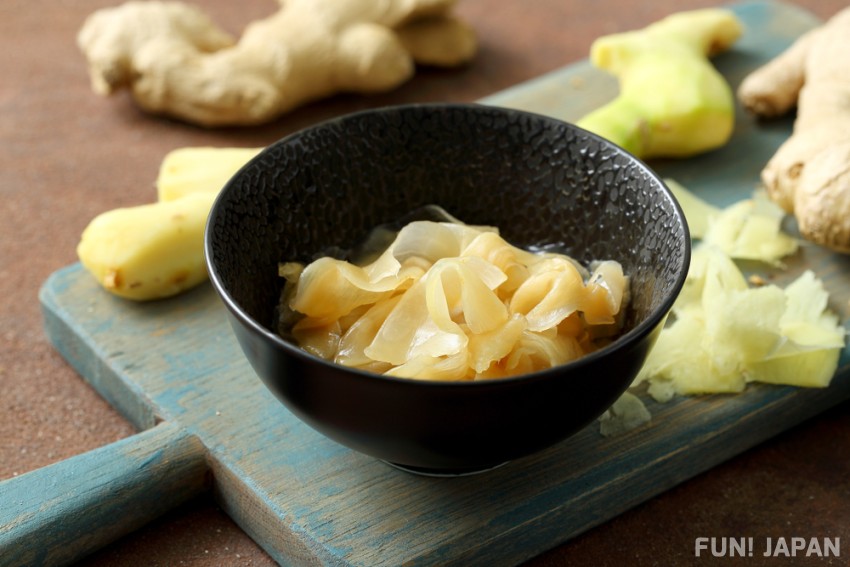
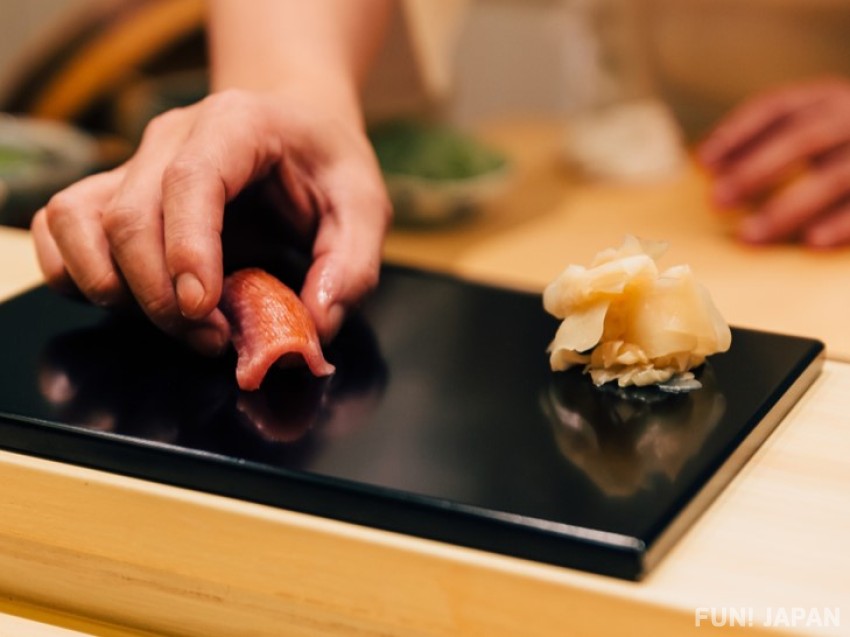
What is gari?
In the case of conveyor belt sushi restaurants, gari is often placed on the table or in the corner of the plate at sushi restaurants. Gari is thinly sliced ginger pickled in sweet vinegar. It is often made with young ginger rather than regular ginger, and the reason it is dyed a light pink color is due to a chemical reaction between the anthocyanin contained in the ginger and the vinegar.
Why is gari served at sushi restaurants?
There are mainly two reasons why gari is served with sushi.
- The first reason is to eliminate the fishy smell of raw fish. Ginger has a "deodorizing effect", and if you eat gari after eating a piece of sushi, the smell and fishiness of the sushi you ate before will disappear, refreshing your mouth.
- The second reason is for "antibacterial disinfection". Ginger contains a component called "gingerol" that has antibacterial effects against bacteria, and it is expected to have a preventive effect against food poisoning caused by eating raw fish.
Also, ginger has a warming effect on the body, so if you tend to upset your stomach by eating cold sushi, it's reassuring to eat pickled ginger.
When to eat gari?
Especially after eating fish with a strong flavor or fatty fish, eating gari can refresh your mouth. It won't affect the next sushi topping you eat. It seems that many people eat gari after eating a piece of sushi.
Should soba's yakumi be put in the soba? How to use them?
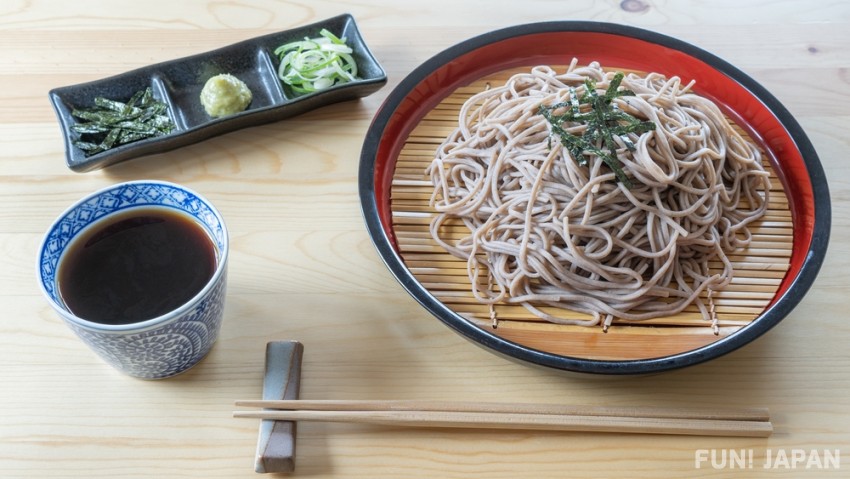
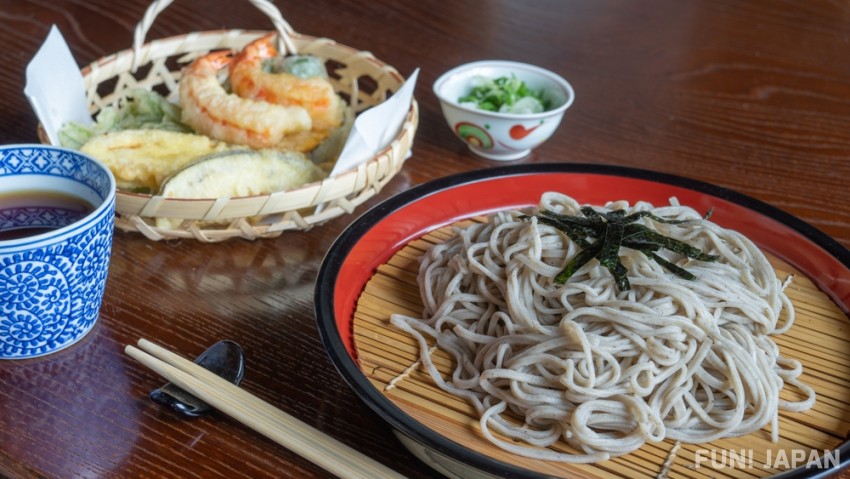
What are the soba yakumi?
"Yakumi" or condiments for soba refers to aromatic vegetables and spices that serve both as "medicine" = for their medicinal effects, and "flavor" = to enhance the taste. Just a little addition can add an accent to the entire dish, add spiciness or sourness, and is often used to highlight the dish. The types of yakumi that are often served with soba include shichimi togarashi and green onions with spicy components, wasabi with a habit-forming scent that exits through the nose, grated daikon radish with a refreshing taste, and nori seaweed which is often placed on "zaru soba". The taste of soba changes depending on the personality and characteristics of the yakumi.
How to eat soba with yakumi?
If you are at a soba shop that serves hand-made soba, you will want to taste the freshly ground flavor of the soba first, so let's eat the soba without adding any yakumi or soba sauce. Next, place the yakumi on the soba and try eating it without dipping it in the sauce. Then, place the yakumi on the soba and dip it in the sauce. Along the way, you can add a little of your favorite yakumi and enjoy the change in taste.
Also, if you dissolve wasabi in warm soba or tsuyu, the flavor of wasabi will fly away, so try picking up a little wasabi with the tip of your chopsticks, picking up the soba with those chopsticks, and then dipping it in the soba tsuyu. By the way, when eating cold soba, you don't have to dip the entire soba in tsuyu, just dip about the bottom third.
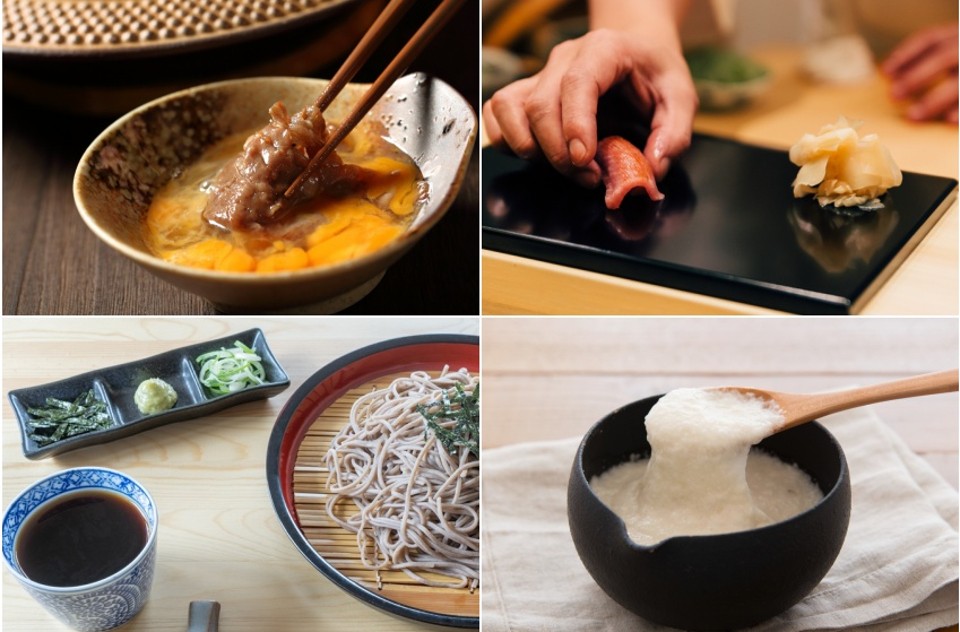

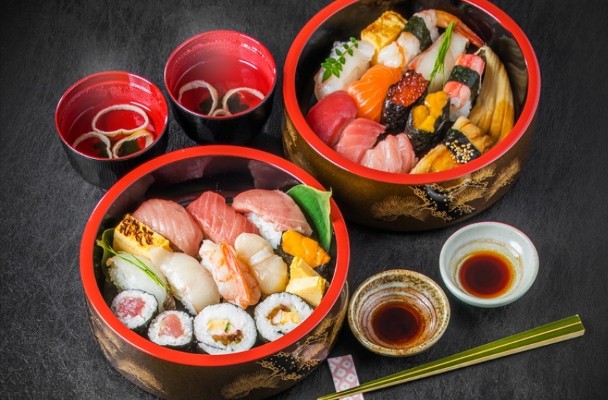
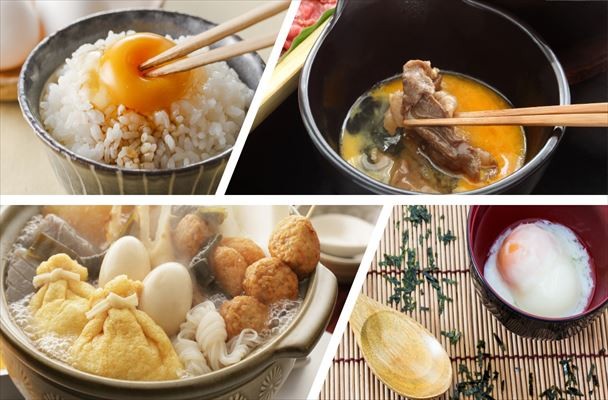
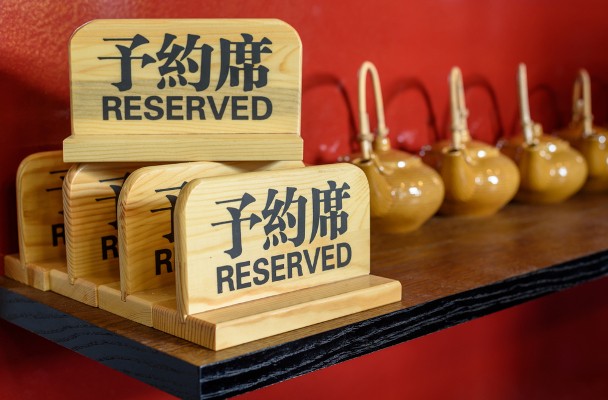
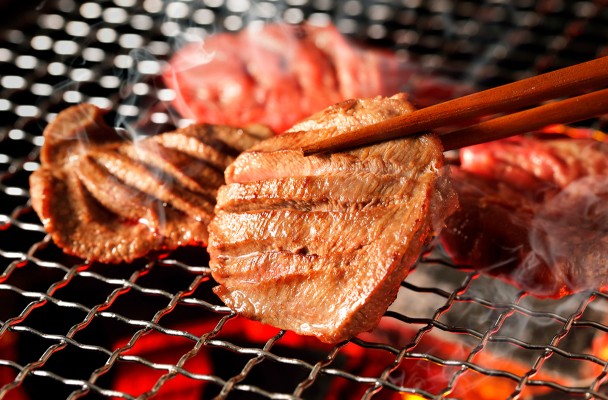
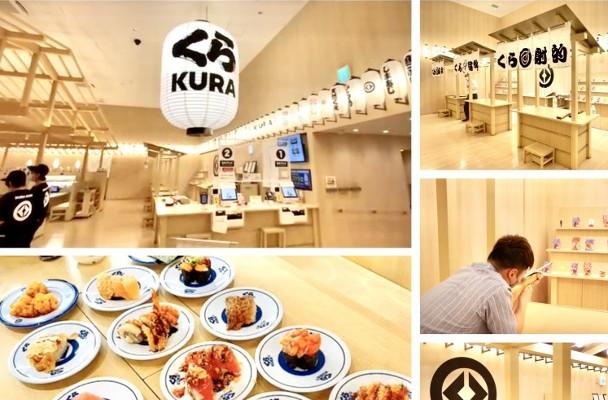
Comments